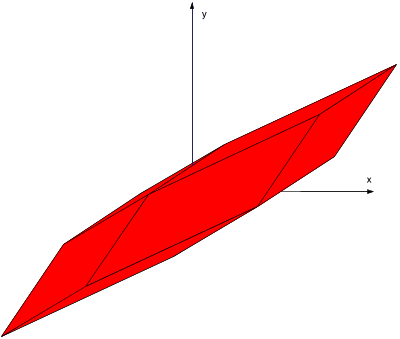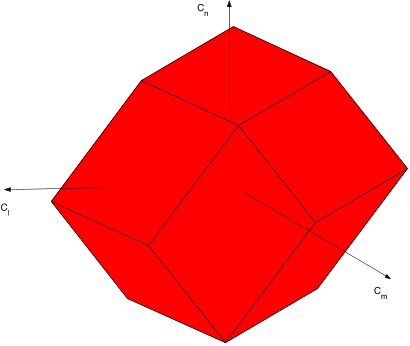




Did you find this useful? Give us your feedback


























92 citations
57 citations
37 citations
7 citations
5 citations
108 citations
...This means that a vertex of the AMS represents a moment that is generated by all 4 controls being at a limit, while an edge represents one control being free to vary [5]....
[...]
...The calculation of the attainable moment subset (AMS) is simple and defines individual facets of the polytope [5]....
[...]
69 citations
...Durham [6] introduced the Bisecting, Edge-Searching Algorithm (BESA) to efficiently allocate controls....
[...]
...30 4.8 AMS as viewed down the +x-axis....
[...]
...Figure 1.2 is an example of an AMS calculated from a 4-control problem....
[...]
...The calculation of the attainable moment subset (AMS) is simple and defines individual facets of the polytope [5]....
[...]
...These edges are identified exactly as was done for the two dimensional problem [6]....
[...]
21 citations
...was used by Bolling in batch mode simulation [9]....
[...]
...This method was proven [4, 9] to work, however it also was computationally intensive and therefore not practical for implementation into real-time flight control computers....
[...]
16 citations
...The reader is referred to Durham and Scalera [6, 7] for the theory behind the algorithm and a comparison of the performance with other allocators....
[...]
...After finding the correct facet the controls that generate the point on the facet are calculated [7]....
[...]
...The description to this direct allocation solution can be found in Scalera [7]....
[...]
...Durham and Scalera demonstrate that this method of control allocation provides a guarantee that the full moment capability is utilized in the control solution....
[...]
...Scalera [7] presents an error analysis for the method of estimation being used....
[...]
14 citations
...Buffington has done some work on the decomposition of the control law and the prioritization of certain control law parts [10]....
[...]
...His research showed improved large command performance compared to a direction preservation command limiting [10]....
[...]
...For this case, Buffington [10] attempts to develope a prioritization structure that provides more control over the performance degradation of an airframe for control deficient situations....
[...]